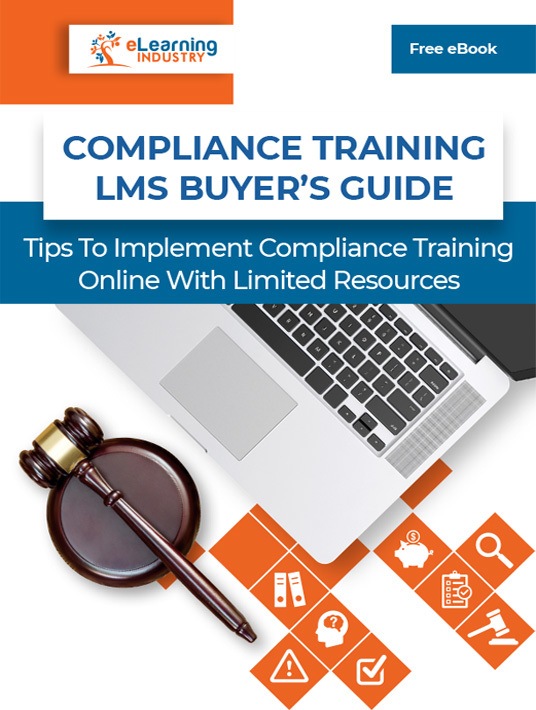6 Steps To Deal With Your Remote Workforce With Compliance Online Training
There’s nothing inherently wrong with conventional training. It’s been done for decades. But online training, for compliance or otherwise, offers far more advantages. It’s convenient for learners, and pocket-friendly for employers. It generates more data and improves efficiency levels. Still, in many organizations, change causes unease when it’s time to make the move to compliance online training. How can you facilitate your cross-over through a series of formalized steps?

1. Evaluate Your Assets
This is the most logical step, but it can also be the most arduous. You’re aware your current conventional training is inadequate, that’s why you’re replacing it. But there’s a lot of it that still works, and you don’t want to toss everything out. Assess existing content to see what can be repurposed or restructured. Visuals might be scanned in high resolution. Heavy text will have to be reworked for smaller screens. Lengthy lessons can be condensed, simplified, and sub-divided into 5-minute classes. These are just a few examples. You should also take stock of the tools you already own. You don’t want to invest in a new compliance training LMS only to discover that it’s incompatible with your current software. This includes everything from CRM and bookkeeping to authoring tools.
2. Create An Accurate Budget
You’ve decided what content you’re keeping, how much tweaking it needs, and what new content is required. Now decide how. Are you building a system from scratch? Will you buy canned software? What type of implementation will this online system need? Are there any hidden fees? How many active users will you have? How long will it take to get the system up-and-running, and which staffers will be involved? Use all these factors to define your budget but leave some contingency room in your figures. And factor the duration and onboarding as well, in terms of billable hours that will be diverted to training. For example, it might take your team a month to get used to and customize the new Learning Management System. And another few weeks to show your employees how to log in and access the content. This is all money that needs to be factored into your payroll.
3. Invest In The Right Compliance Training LMS
At the budgeting stage, you’re still dealing with guesstimates and shortlists. Now you can look into tools, features, and implementation plans. Will your vendor install it for you? What’s their support system like? If you’re going open-source, what’s the real hidden cost? It’s helpful if you have a list of mandatories. Ensure your chosen LMS has all the necessary features and fits your budget. Designate a team to explore your top LMS contenders via a free trial. Assign them testing areas to focus on e.g. User Experience, reports, analytics. Their testing topic depends on which part of the LMS is tied into their individual job description and/or their departmental needs. You should also begin your search with an online directory so that you can quickly whittle down the options. Instead of having to search the web for viable solutions and rely solely on vendor-hosted sites.
4. Migrate Resources
Once your selected LMS is bought, paid for, and installed, it’s time to integrate it. This means you take existing training resources, the ones you decided to keep and populate your Learning Management System. It’s helpful if you selected an online training platform with convenient import and export tools. Digitize any analog resources and create user accounts as needed. Integrate your LMS to other existing software systems e.g. customer databases, product catalogs, customer care modules, etc. Remember to back up your digital files. Even if you end up trashing the paper cache that represents your prior training modules.
5. Onboard Your Staff
Now that the new Learning Management System is in place, everyone needs to learn how to use it. Allow ample time for your staff to get familiar, but don’t just let them flounder. After all, compliance training software is expensive, and they could do pricy damage in their ignorance. Walk them through a demo video and assign staff members that can be sought when their colleagues get stuck. The LMS itself should have built-in chatbots and virtual training assistants. A JIT library is helpful too.
6. Follow-Up
The last step in the migration process is following up to ensure that your new compliance training LMS is filling all the gaps and improving ROI. Evaluate reports, conduct surveys, and assess your employees to diagnose emerging issues. For example, the new Learning Management System is more difficult to use than you thought. Or you still need to develop content that gives them real-world practice to mitigate risks. Lastly, remember to keep accurate records in case you’re audited.
Making the move from traditional face-to-face training can seem daunting, but it doesn’t have to be. Just take a step-by-step approach and you’ll be done sooner than you think. Begin by evaluating your existing training resources and seeing which ones can be digitized in a meaningful way. Don’t just rush to scan everything, a lot of your content will need restructuring. Set your budget then explore, test, and invest in the right LMS. Move your now reformatted training materials onto the new compliance online training software. Then set aside some time to help your staff learn how to use it. This last stage is crucial, because if they have a bad initial experience, they may never log on again. Then all your work and expenditure will be for nothing.
Have you ever wondered what compliance training is and how you can implement a compliance training LMS in your workplace without going over your budget? Download our eBook Compliance Training LMS Buyer's Guide: Tips To Implement Compliance Training Online With Limited Resources and discover how to cut costs, mitigate risks, train your employees, monitor their performance, and maintain your company’s high standards.

